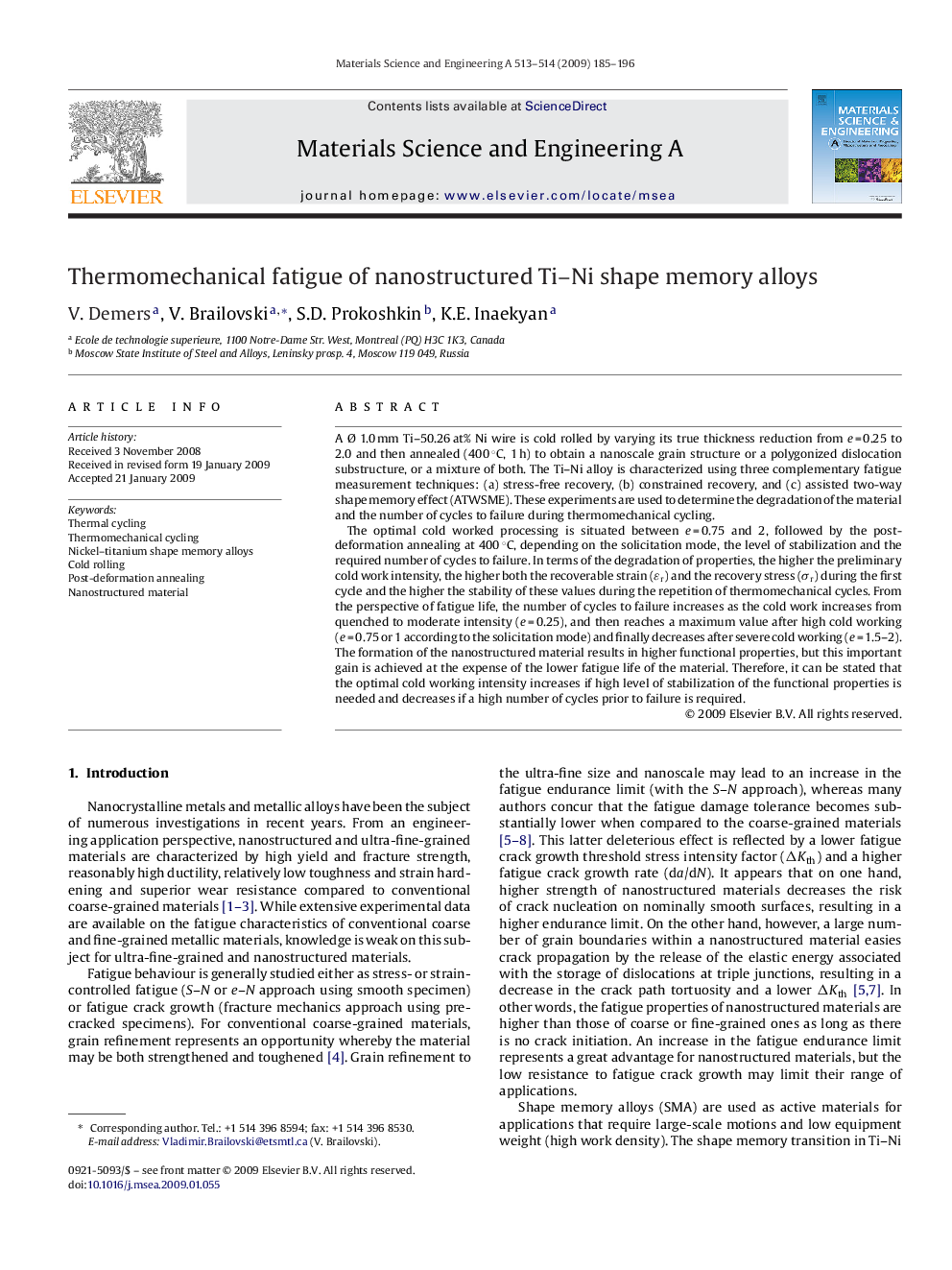| کد مقاله | کد نشریه | سال انتشار | مقاله انگلیسی | نسخه تمام متن |
|---|---|---|---|---|
| 1580476 | 1514846 | 2009 | 12 صفحه PDF | دانلود رایگان |

A Ø 1.0 mm Ti–50.26 at% Ni wire is cold rolled by varying its true thickness reduction from e = 0.25 to 2.0 and then annealed (400 °C, 1 h) to obtain a nanoscale grain structure or a polygonized dislocation substructure, or a mixture of both. The Ti–Ni alloy is characterized using three complementary fatigue measurement techniques: (a) stress-free recovery, (b) constrained recovery, and (c) assisted two-way shape memory effect (ATWSME). These experiments are used to determine the degradation of the material and the number of cycles to failure during thermomechanical cycling.The optimal cold worked processing is situated between e = 0.75 and 2, followed by the post-deformation annealing at 400 °C, depending on the solicitation mode, the level of stabilization and the required number of cycles to failure. In terms of the degradation of properties, the higher the preliminary cold work intensity, the higher both the recoverable strain (ɛr) and the recovery stress (σr) during the first cycle and the higher the stability of these values during the repetition of thermomechanical cycles. From the perspective of fatigue life, the number of cycles to failure increases as the cold work increases from quenched to moderate intensity (e = 0.25), and then reaches a maximum value after high cold working (e = 0.75 or 1 according to the solicitation mode) and finally decreases after severe cold working (e = 1.5–2). The formation of the nanostructured material results in higher functional properties, but this important gain is achieved at the expense of the lower fatigue life of the material. Therefore, it can be stated that the optimal cold working intensity increases if high level of stabilization of the functional properties is needed and decreases if a high number of cycles prior to failure is required.
Journal: Materials Science and Engineering: A - Volumes 513–514, 15 July 2009, Pages 185–196